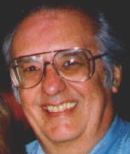Dr. David R. Adams died on July 30, 2021, peacefully in his sleep after a long battle with kidney disease and related problems. He was born on January 23, 1941, and is survived by his wife, Jeanie Adams and two children, Jay Bertino and Sissy Meredith, PhD. He liked creating new mathematics, international travel, reading -especially historical fiction, talking with friends, shooting pool, and stamp collecting. David developed a love of international travel and the world’s people as an Army Brat, of which he was very proud. He spent his middle school years in Tokyo and completed his high school years in the Panama Canal Zone.
David Adams received his PhD from the University of Minnesota in 1969 under the direction of Norman Myers, and he worked in the areas of partial differential equations, potential theory andanalysis. After postdocs at Consiglio Nazionale delle Ricerche in Rome, Italy, (supervised by Guido Stampacchia), Rice University and University of California, San Diego, he joined the faculty of the University of Kentucky in 1973, where he remained a professor until his retirement in 2015. He published 71 research papers and two research monographs. He continued his work after his retirement, especially his many years of collaboration with Jie Xiao on Morrey spaces in harmonic analysis and partial differential equations. His book Function Spaces and Potential Theory (1996), written jointly with Lars Inge Hedberg, is a treatise on the interplay of potential theory and function spaces, including Sobolev, Bessel potential, and Besov spaces. His interest in analysis and potential theory was again showcased in his book, Morrey Spaces (2015). He also wrote Lecture Notes on Lp Potential Theory at Umea University, Sweden (1981). His proof of the Moser-Trudinger inequalities with higher order derivatives, now known as Adams’ inequalities, has had broad impact, generating results in many other non-Euclidean settings such as Riemannian manifolds and Heisenberg groups.
David Adams was an extremely talented and knowledgeable mathematician, who enthusiastically shared his knowledge with students and colleagues. He communicated his ideas in clear and positive ways. He had an exceptional talent to combine analysis and PDEs for novel results. He was a generous mentor to many mathematicians. In particular, many female mathematicians appreciated his work, teaching, and mentoring, including Patricia Bauman, Lillie Crowley, Renee Fister, Ann Heard, Mary Ann Horn, Ritva Hurri-Syrjanen, Suzanne Lenhart, Helena Nussenzveig Lopes, and Jill Pipher.
By Suzanne Lenhart

